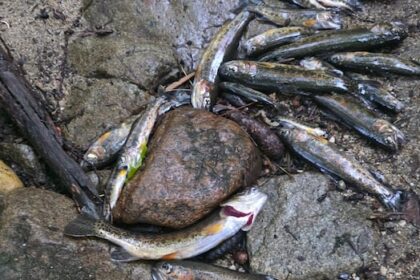The phrase “eat the rainbow” has become both nutritional advice and a growing trend – here’s what each colour does and why it’s importantPublished Jun 10, 2025 • Last updated 1 hour ago • 5 minute readA mix of fruits and vegetables including tomatoes, bananas and peppers — experts say eating a variety of colours provides a diverse range of nutrients and antioxidants. Judith MendioleaWhen Melanie Wood walked out into her early-summer garden in P.E.I., she didn’t just see food — she saw a colour-coded opportunity.“People always say you eat with your eyes first. Bright, contrasting colours are tasty and signal peak freshness,” said Wood, junior sous chef at Lightfoot & Wolfville Vineyards in N.S.“If everything is beige, that’s not the kind of balance you’re looking for.”THIS CONTENT IS RESERVED FOR SUBSCRIBERS ONLY.Subscribe now to access this story and more:Unlimited access to the website and appExclusive access to premium content, newsletters and podcastsFull access to the e-Edition app, an electronic replica of the print edition that you can share, download and comment onEnjoy insights and behind-the-scenes analysis from our award-winning journalistsSupport local journalists and the next generation of journalistsSUBSCRIBE TO UNLOCK MORE ARTICLES.Subscribe or sign in to your account to continue your reading experience.Unlimited access to the website and appExclusive access to premium content, newsletters and podcastsFull access to the e-Edition app, an electronic replica of the print edition that you can share, download and comment onEnjoy insights and behind-the-scenes analysis from our award-winning journalistsSupport local journalists and the next generation of journalistsRegister to unlock more articles.Create an account or sign in to continue your reading experience.Access additional stories every monthShare your thoughts and join the conversation in our commenting communityGet email updates from your favourite authorsSign In or Create an AccountorArticle contentFor Wood, colour on the plate isn’t just about aesthetics — it’s also about nourishment, seasonality and creativity.And as farmers’ markets bring summer produce across Atlantic Canada and backyard gardens begin to yield their first vegetables, the phrase “eat the rainbow” has become both nutritional advice and a growing trend. Melanie Wood, junior sous chef at Lightfoot & Wolfville Vineyards, N.S., uses colour as a guide in her cooking. “Bright, contrasting colours are appetizing — and they signal peak freshness,” she says. Judith MendioleaWhat it means to eat the rainbowAcross cultures and centuries, colour has played a symbolic — and often health-based — role in how humans approach eating.In Traditional Chinese Medicine and Ayurveda, different colours correspond to organs and healing properties.In Indigenous food systems across Mi’kma’ki and beyond, seasonal colour cycles in berries, tubers and leafy greens were central to both diet and ceremony.Even now, some of the world’s longest-living populations intuitively follow this principle. In Okinawa, Japan, elders adhere to a “colourful plate” model — every meal includes five colours, five tastes and five preparation methods. These choices are rooted in culture, not calorie counts.Article content Kate MacQuarrie, a P.E.I.-based forager and biologist, says eating with the seasons is a tradition that connects people with the land. She’ll be publishing her book in “Wild Foods” on June 20 at the Carriage House in Charlottetown, P.E.I. Judith Mendiolea“People think it’s new, but we all come from foragers,” said Kate MacQuarrie, a biologist and forager who leads edible plant workshops and will soon release her book Wild Foods on P.E.I.“You’re here because your ancestors knew how to feed themselves from the land.”MacQuarrie said she thinks of foraging as “eating with the seasons — shoots in the spring, flowers in summer, roots and seeds in fall.”At its core, eating the rainbow means including fruits and vegetables of many colours throughout the day. Each pigment contains different nutrients, antioxidants and phytochemicals.“A lot of the colours, especially the richer ones, contain phytonutrients — anti-inflammatory, antioxidant and even anti-cancer properties,” said Tammy Lomond, a registered dietitian with JM Nutrition, a Canada-wide service.“Eating all the colours gives your body a diverse toolkit to support immunity, brain function and disease prevention.”Article contentWhat the colours do for your bodyAccording to information provided by Jill MacDonald, a dietetic intern completing her community placement at the Cape Breton Food Hub:Red (tomatoes, strawberries, beets): Lycopene and anthocyanins — support heart health and may reduce cancer risk.Orange and yellow (carrots, squash, yellow beans): Beta-carotene (vitamin A) — supports vision, skin repair and immune function.Green (kale, bok choy, snap peas): Folate, vitamin K and iron — support bones, blood and cell growth.Blue and purple (blueberries, purple cabbage): Anthocyanins — reduce inflammation and improve blood vessel function.White and brown (garlic, onions, mushrooms): Allicin and selenium — boost immunity and combat oxidative stress. A salad of mushrooms, carrots and purple yam — combining different colours can increase nutritional value and visual appeal. Judith Mendiolea“White is not always a bad thing,” Lomond added. “Garlic, onions and mushrooms are full of flavonoids and antioxidants too.”Article contentMacQuarrie noted that darker fruits, such as chokeberries, tend to be higher in antioxidants and offer richer flavour profiles.A 2013 study in the British Journal of Nutrition found that eating at least five colour groups per day was associated with significantly higher antioxidant intake, regardless of total volume consumed. The World Health Organization recommends that adults consume a minimum of 400 grams of fruits and vegetables daily — ideally from a mix of sources.“The brighter the colour, the more protective compounds it likely contains,” Lomond said.Barriers are real — but so are solutionsFor many people, time, cost or lack of experience can make healthy eating feel out of reach. But experts say there are practical ways to make rainbow eating affordable and realistic.“Frozen fruits and vegetables are a great backup — they’re often more budget-friendly and still retain nutrients,” said Lomond. “They’re picked at peak ripeness and hold on to most of their benefits.”Article contentShe added that potatoes — a staple in P.E.I. — deserve a better reputation.“Potatoes have a bad rep, but they’re low in fat, high in fibre and full of nutrients. It’s how you prepare them that matters.”Wood echoed the importance of flexibility. She often roasted squash to freeze in portions and preserved wild dandelion greens into chimichurri.“You don’t have to can everything,” she said. “Your freezer is your best friend.”MacQuarrie emphasized respecting nature’s cycle.“Never take more than one in 10 — even for something common like raspberries,” she said. “Leave the rest to regenerate and feed wildlife.”She also described foraging as a holistic practice.“It gives you healthy local food, but also the exercise of going out to get it. It’s like firewood: it heats you twice.”According to the Cape Breton Food Hub, summer is an ideal time to buy in bulk, preserve extras, and explore heirloom vegetables or new herbs. Farmers’ markets offer better prices at peak harvest, and vendors often provide advice on preparation techniques.Article content“Talk to your farmers, talk to your grocers,” Wood said. “Local food makes delicious food — and supports your community.”While often popularized as a wellness trend, the principle of eating colourfully doesn’t require exotic superfoods or perfect plates — just variety, seasonality and intention.Read More Dreading eating your veggies? P.E.I., Newfoundland nutritionists suggest making a rainbow on your plate might be the solution Are your kids eating enough fruits and veggies? Experts offer their best tips to level up your game How to put a rainbow on your plateLomond recommended using the Canadian Food Guide’s “balanced plate” as a visual cue: half the plate should be vegetables or fruit, one-quarter protein and one-quarter starch or grain.“That’s where your colour comes in,” she said. “That’s your rainbow.”For parents with picky eaters, Lomond suggested a playful approach. “Present fruits and veggies in fun ways, mix them into dishes or purée them. Framing it as ‘eating a rainbow’ can help.”Article contentWood, who often cooks with garden produce, said one of her go-to strategies is what she calls the “grow together, go together” rule. “It’s the foundation of seasonal cooking.”Tips for real-life rainbow eatingToss berries into your breakfast oats.Freeze extra stir-fry for later.Blanch and freeze kale or Swiss chard in small bundles.Ask market vendors what’s fresh and how to cook it.Build colourful plates using the balanced plate method. Biologist and forager Kate MacQuarrie looks for mushrooms in Charlottetown, P.E.I. She teaches workshops on wild edible plants and emphasizes harvesting responsibly. Judith MendioleaPreserving the rainbowSummer doesn’t last forever — but a little planning can carry its colours into winter.Wood said she freezes kale and Swiss chard in small portions for soups and stir-fries. Tomatoes can be frozen raw or canned, and berries can be bagged for smoothies. Pickled beets, beans and edible flowers add acidity and vibrancy to cold-weather meals.In the end, preserving doesn’t have to be all or nothing.“Even just a little bit — it adds up,” Wood said.She also recommended curating a few reliable online sources to avoid information overload.“There’s so much out there. I go to New York Times Cooking, The Woks of Life or Serious Eats — they’ve never steered me wrong.”Ultimately, eating the rainbow isn’t about perfection. It’s about seeing what’s in season, supporting local growers and reconnecting with a slower rhythm of nourishment.“You don’t eat more local than the food that might be right in your own backyard,” said MacQuarrie.Article content
From garden to plate: How to eat a rainbow this summer











